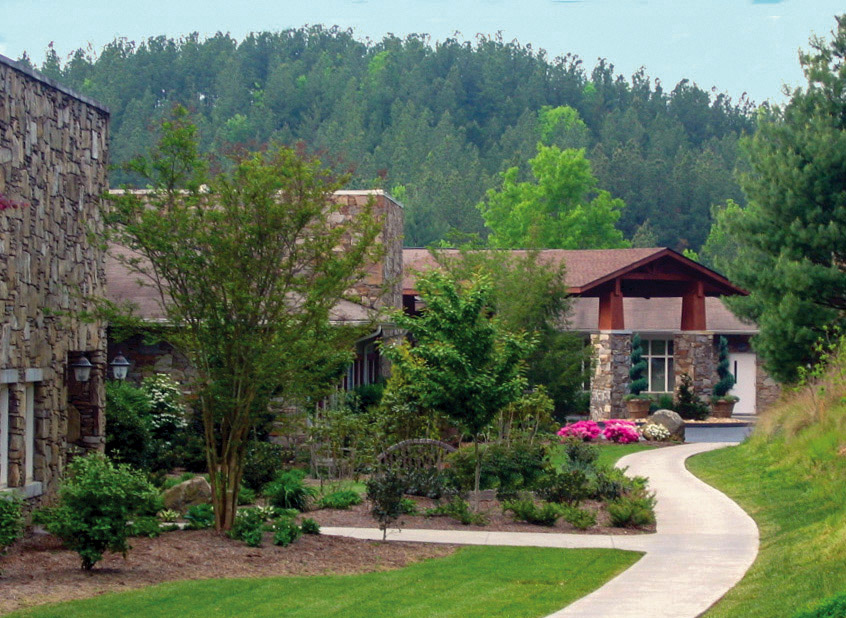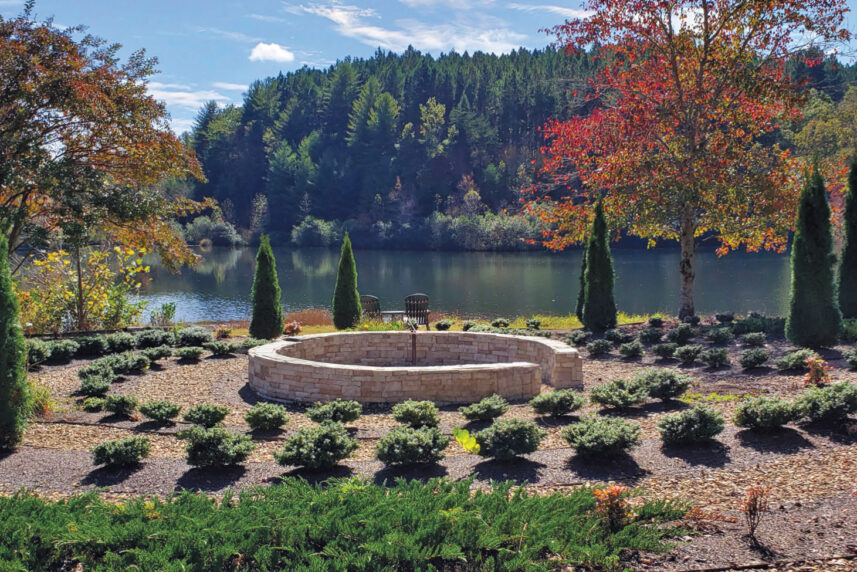Article:
BY KRISTEN SCHRUM | PHOTOS COURTESY OF PAVILLON SUBSTANCE USE DISORDER TREATMENT CENTER
A recent trend within the world of addiction therapy finds that combining classical forms of addiction treatment, such as the 12-step model, with inpatient retreat rehabilitation centers, stands out as a uniquely powerful way to speed up recovery among addiction patients. Such rehabilitation centers, like the Pavillon Substance Use Disorder Treatment Center in Mill Spring— just under four hours west of the Triangle—utilize important factors such as the natural environment in which they are situated, as well as an emphasis on community support, bolstered by shared experiences, to deliver patients from the bondage of addiction.

HEALING IN NATURE
Research conducted by the Center for Environment, Health and Field Sciences at Chiba University in Japan emphasizes how nature therapy, defined as “a set of practices aimed at achieving ‘preventive medical effects’ through exposure to natural stimuli,” results in “a state of hyperawareness and hyperactivity of the parasympathetic nervous system that renders a person in a state of relaxation” (Song & Miyazaki, 2016). In other words, being out in nature relaxes one’s body after it has experienced periods of stress or danger, which often trigger the need for the release that occurs in compulsive behavior.
Licensed Clinical Addictions Specialist Barbara Bennett, who is also a certified addiction registered nurse and CEO of the Pavillon Substance Use Disorder Treatment Center, explains how rehabilitation centers like hers are able to remove patients from day-to-day stressors by offering a “complete retreat.” The Pavillon Mill Spring campus encompasses 160 acres of western North Carolina property nestled among oak- and pine-covered mountains. Such an environment, besides providing patients with the natural stimuli associated with nature therapy, encourages meditation and reflection. This allows participants to focus solely on recovery while their individual needs are met in an emotional, mental and even spiritual way.
“Nature has a lot of healing components,” Bennett explains. “Why wouldn’t you want to come out and be in the beautiful foothills and mountains with walking trails, a labyrinth, a lake and a meditation tree?”
Retreat rehabilitation centers offer patients the opportunity to lose themselves in recreational activities such as hiking, meditation and exercise. They find themselves cloistered in a safe, stable bubble that limits distractions and promotes relaxation so they can experience success in their treatment. In this way, the unperturbed mind shifts to focus on oneself and one’s own recovery.
“Healing happens when we are able to establish new habits away from the people, places and things that trigger us,” says Megan Denis, a licensed clinical mental health counselor at Raleigh Psychology. “Retreat centers offer clients the ability to shift their perspectives with the support of licensed professionals. They often offer strategies and resources that therapists in an outpatient setting can’t provide.”

FINDING FRIENDSHIP
Another important aspect to the recovery model found in most retreat rehabilitation centers like Pavillon is their emphasis on community. According to American Addiction Centers, “forging connections” with the people participating in a similar addiction recovery program stands as a benefit to
in-patient rehabilitation. The center’s research shows how “these [support] relationships can be helpful when working through difficult issues, especially when people are in similar stages of recovery.”
“People really bond while they are in treatment, and will make lifelong friends,” Bennett says.
Getting away and finding an oasis of friendships plays an instrumental role in Pavillon’s recovery model. A 2020 study led by Petra K. Staiger for the Journal of Clinical Medicine illustrates how forming a “therapeutic community” was “associated with substantial and sustained improvements in consumption [across a range of substances].” In that same study, therapeutic communities demonstrated a focus on lifestyle and “identify change using the ‘community as method.’”
Therefore, in addition to providing patients with a holistic escape from the stressors in life that often trigger addiction and compulsive behavior, cultivating a culture of community and vulnerability in a safe space through a clinical team is key.
“We tell folks that we are here for them for life,” assures Bennett, emphasizing the importance that Pavillon places on community and support. “We have been here for 26 years and we really haven’t deviated from our mission: to bring hope, healing and lasting recovery for patients and their families.”



